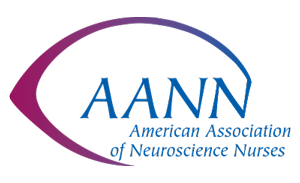2025 Neuroscience Nursing Annual Conference Featured Sessions
We look forward to seeing you in New Orleans for the Neuroscience Nursing Annual Conference from Sunday, March 16-Tuesday, March 18, 2025!
The following are extra-cost events, not included in the 2025 Neuroscience Nursing Annual Conference registration fee.
Sunday, March 16
(001) 3D Functional Brain Anatomy related to Stroke, Trauma and Pathology across the Lifespan

8 am–12 pm EDT
Level: Intermediate
Track: Anatomy
Speaker: Linda Littlejohns, MSN RN SCRN CNRN FAAN
Member: $150
Non-Member: $200
Neuroscience patient care is built on a foundation of normal anatomy knowledge. This session will explore the normal structures, blood supply, lobes and deeper nuclei, brainstem, and cerebellum. The patient assessment scenarios, and pathology demonstrated, will prepare you for Stroke, Trauma and CNRN test taking. Having slides on one screen (textbook images and scans) in addition to normal structures and blood supply in 3D on a second screen, truly enhances the learning experience. Together we can look at the complexities of the brain’s lobes and connections, brainstem and cranial nerves (and their pathways), the cerebellum; and the arterial and venous systems that are so important.
(002) Best Practices in Neuroscience Orientation

8 am-11 am EDT
Level: Intermediate
Track: Professional Development
Speakers: Cynthia Bautista, PhD APRN FNCS FCNS; Lorin Daniels, MSN APRN AGACNP-BC CNRN RNFA; Mary McKenna Guanci, MSN RN CNRN SCRN FNCS; Lori Rhudy, PhD APRN CNS ACNS-BC CNRN; Marianne Beare Vyas, PhD RN ANP-BC CNRN
Member: $75
Non-Member: $100
Neuroscience nursing has been considered a specialized field requiring a complex knowledge base and unique orientation. Neuroscience orientations have often been hospital-based, regionally specific, and may be identified as orientation, onboarding, fellowships, or residencies. Programs may vary depending on budget, resources, patient population, and practice settings. Current personnel shortages in nursing have impacted care delivery and prompted hospitals to examine recruitment and retention practices. A comprehensive orientation can improve nurse retention, performance, and satisfaction. More importantly it ensures quality patient care.
The core components of neuroscience orientation in an adult population for both general care and intensive care were recently published providing a framework for content development, but other considerations remain. These considerations include clarification of roles, length of orientation, preceptor development, team support, evaluation, and knowledge of educational resources available.
This interactive program will engage participants to develop and implement best practices in the development of neuroscience orientation.
(003) Spine Anatomy and 3D Correlation to Trauma and Degenerative Disease

1-3 pm EDT
Level: Intermediate
Track: Spine
Speaker: Linda Littlejohns, MSN RN SCRN CNRN FAAN
Member: $75
Non-Member: $100
Visibility of the structures of the spine, spinal cord, peripheral nerves, and blood supply in 3D greatly enhances the understanding of pathology and symptoms in neuro patients. This session will discuss traumatic and degenerative findings in the spine and considerations when a critical structure such as the spinal cord is compromised due to age or damage to the spine or blood supply. We’ll discuss cases and radiologic findings as we compare normal anatomy to pathology.
(004) Basic Neuroimaging: More Than Fifty Shades of Grey


1-3 pm EDT
Level: Intermediate
Track: Special Topics
Speakers: Cathy Cartwright, DNP RN-BC PCNS FAAN; Rachel Malloy, DNP RN CNRN SCRN
Member: $75
Non-Member: $100
Interpreting neuroimaging gives an added dimension to understanding the complexity of the neuroscience patient. This presentation will discuss various neuroimaging modalities and the rationale for ordering each scan. Using case studies, neurological conditions and the appropriate imaging and interpretation will be highlighted. Correlation between diagnosis, exam, neuroimaging, and intraoperative findings will be emphasized. Understanding basic neuroimaging will enhance the nurse’s ability to care for patients by gaining a deeper understanding of their condition.
Monday, March 17
Opening Remarks from AANN President Kimberly Meyer & Agnes Marshall Walker Keynote Address:
Finding Strength in Adversity: My Path to Neurosurgery

Betsy Grunch, MD FAANS FACS FCNS
Dr. Grunch's journey to becoming a spine surgeon began with a personal experience that ignited her passion. Committed to helping others, she overcame the challenges of training in a male-dominated field. She highlights the invaluable role of nurses in her surgical team, providing essential support throughout the process. Together, they've achieved life-changing outcomes, helping patients recover from spinal cord injuries and regain mobility through compassionate, patient-centered care.
AANN is accredited as a provider of nursing continuing professional development by the American Nurses Credentialing Center’s Commission on Accreditation. All CE contact hours are subject to change as the Annual Conference approaches.

